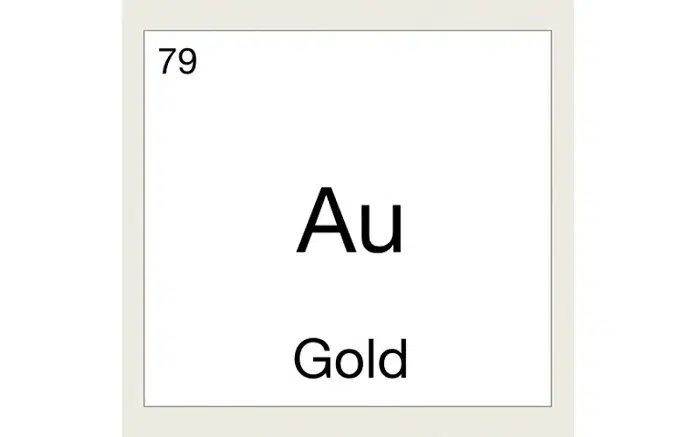Gold and silver are two of the most valued metals in human history. From ancient civilizations to modern financial systems, these metals have been prized not only for their physical properties but also for their symbolic and economic significance. One of the fundamental ways these metals are recognized in science and trade is through their symbols. The symbol for gold and silver is more than just shorthand—it is a universal language across chemistry, jewelry, investment, and culture.
Chemical Symbols of Gold and Silver
In scientific contexts, especially chemistry, elements are represented by symbols derived from Latin. Gold and silver are both part of the periodic table and are assigned specific symbols:
- Gold: Au (from Latin Aurum)
- Silver: Ag (from Latin Argentum)
These symbols are used in chemistry equations, material labeling, scientific literature, and precious metal certifications. Their origins reflect the long-standing relationship between ancient languages and modern science.
Why Not Use G or S?
The reason we don’t use “G” for gold or “S” for silver is due to overlap with other elements. “G” and “S” are already assigned to other elements (like sulfur for S), and Latin was chosen to avoid confusion and ensure global standardization.
Symbols in the Jewelry Industry
In the world of jewelry and hallmarking, gold and silver are often indicated by both their purity level and symbol.
Gold
Gold jewelry is typically stamped with:
- Karat value: 24K (pure), 22K, 18K, etc.
- Fineness: 999, 916, 750 depending on purity
- Accompanied by the symbol “Au” in technical catalogs or documentation
Silver
Silver items may be stamped with:
- Purity rating: 999 (fine silver), 925 (sterling silver), 800 (coin silver)
- Symbol “Ag” used in scientific labeling and quality control tags
These marks help buyers and traders determine the authenticity and value of an item.
Gold and Silver Symbols in Investing
Precious metals are a major part of investment portfolios. Gold and silver are traded on commodities markets using globally accepted codes:
- Gold: XAU
- Silver: XAG
These ticker symbols are used in forex platforms, commodity exchanges, and financial reporting. They allow real-time tracking of gold and silver spot prices.
Common Market Uses
- XAU/USD: Gold value in US Dollars
- XAG/EUR: Silver value in Euros
These are essential for investors, especially in ETFs (Exchange-Traded Funds), bullion trading, and hedge planning.
Religious and Cultural Symbolism
Beyond science and finance, gold and silver have deep cultural and spiritual symbolism.
Gold
Gold symbolizes wealth, divinity, and purity in many cultures. In religious rituals, gold is used to adorn deities, temples, and sacred texts. It is also common in wedding ceremonies and festivals like Diwali or Chinese New Year.
Silver
Silver is often associated with the moon, clarity, and healing. In many traditions, silver jewelry is believed to have protective and purifying properties. It is also used in amulets, religious ornaments, and utensils during sacred rituals.
Gold and Silver Symbols in Digital and Unicode
With the rise of digital communication, symbolic representation of metals has also entered the Unicode system.
- No official emoji exists for gold or silver metals
- However, many use 🔱 or 💍 to represent precious metals informally
- In documentation, superscript characters like Au⁰ or Ag⁺ may be used for ionic states
Digital typography tools often include customized icons for branding or infographics involving gold and silver.
Historical Origin of the Symbols
The Latin origins of Au and Ag go back to early alchemists and Roman scholars:
- Aurum: Means “shining dawn” in Latin, reflecting the luster of gold
- Argentum: Related to the Sanskrit word arjuna, meaning white or bright
These names were adopted and standardized in the 19th century with the development of the modern periodic table.
Practical Applications of the Symbols
- Science Labs: Labeling chemicals and alloys
- Manufacturing: Indicating metal types in parts and components
- Retail: Tagging items for sale in jewelry stores
- Academic Use: Chemistry textbooks, exams, and educational diagrams
- Legal and Customs: Import/export documents require accurate metal designation using these symbols
Whether for identification, valuation, or scientific use, the symbols remain essential in both daily operations and specialized industries.
FAQs About Symbol for Gold and Silver
What is the symbol for gold?
The chemical symbol for gold is Au, derived from the Latin word Aurum.
What is the symbol for silver?
The chemical symbol for silver is Ag, which comes from the Latin word Argentum.
Are these symbols used in jewelry?
Yes, jewelry may carry purity stamps and technical documentation using Au for gold and Ag for silver.
What do XAU and XAG mean?
They are trading symbols used in financial markets to represent gold (XAU) and silver (XAG) against various currencies.
Why do gold and silver have Latin symbols?
Using Latin helps avoid confusion with other elements and ensures global consistency in science and trade.
The symbol for gold and silver holds value beyond simple letters. These scientific abbreviations—Au and Ag—connect ancient language with modern precision, appearing in everything from laboratory equipment and jewelry to international stock tickers. Whether you’re a student, a buyer, or an investor, understanding these symbols can enhance your appreciation of how these timeless metals are embedded in our world across disciplines and cultures.



